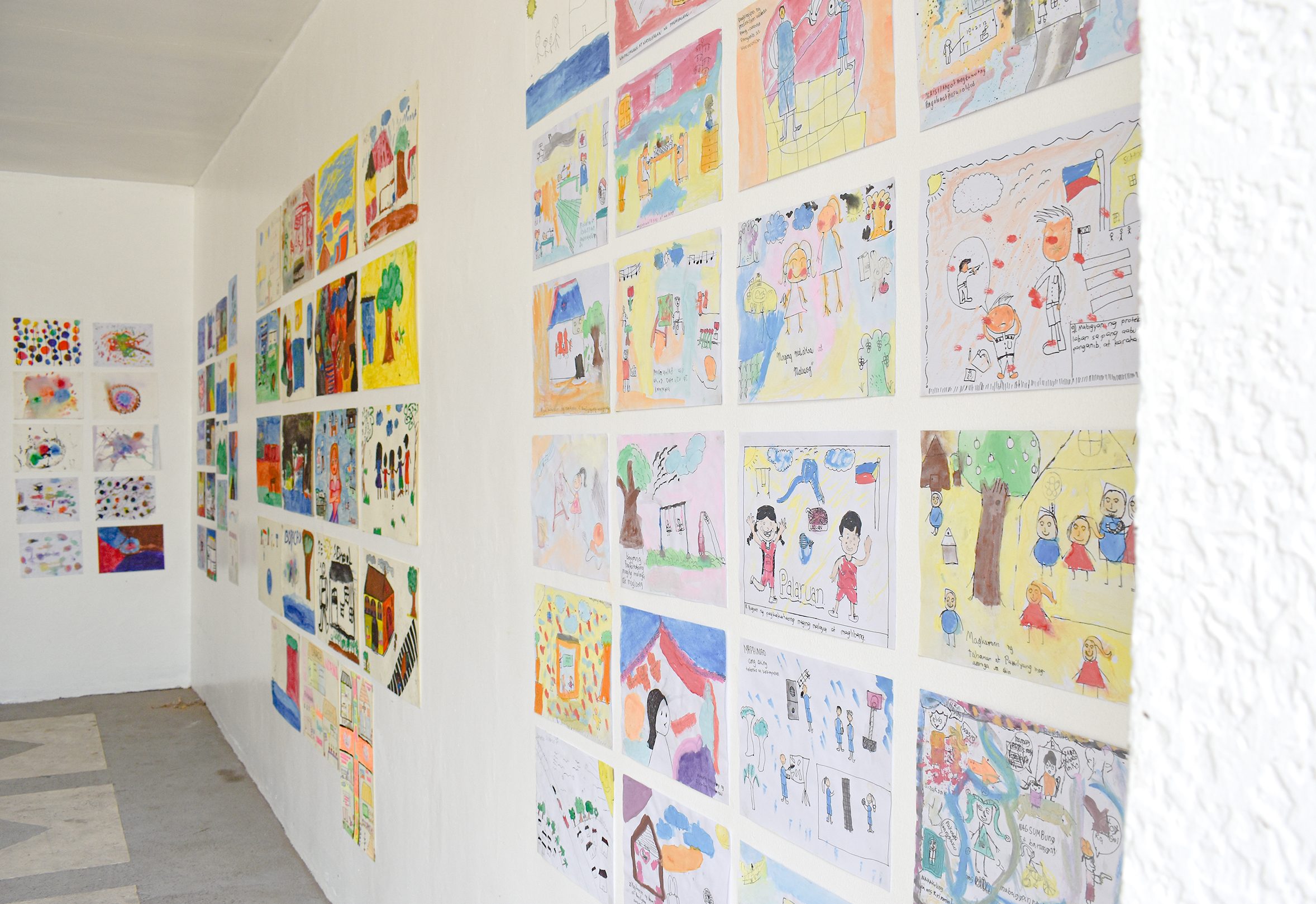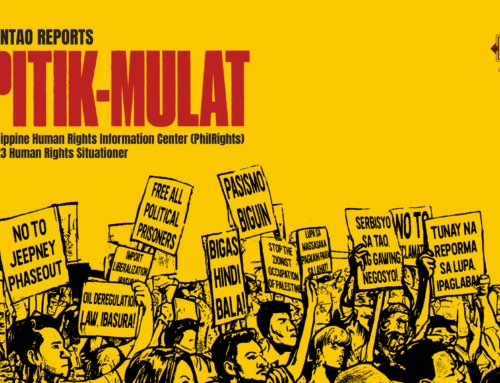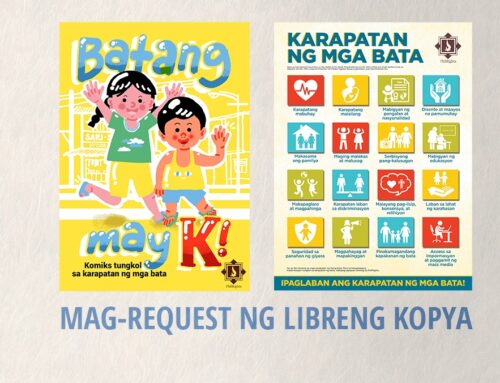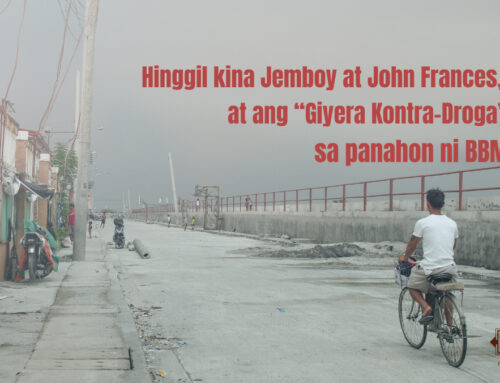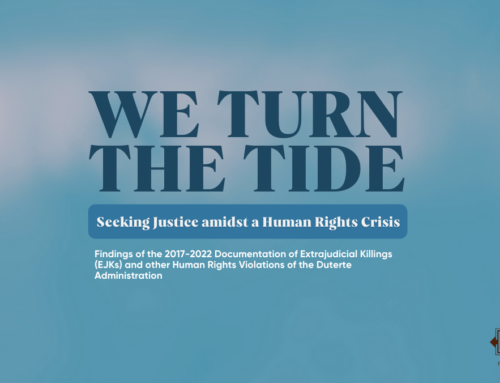By PhilRights Staff
Expression and exploration both play a vital role in the development of a child. So much so that the rights of each and every child to play and to freely express are enshrined in the United Nations Convention on the Rights of the Child (UNCRC). To be able to fully enjoy these rights, a child needs a safe, nurturing, and dynamic environment where they can be able to live out their childhood fully and flourish as individuals.
But many children today are living in precarious environments, profoundly affecting their experience of childhood. The global pandemic, along with the lockdown measures, can entail violence and constraints toward the child that deprive them of their right to play and to express freely, not to mention the threats to other basic rights to education, adequate food, and health, among others.
In the Philippines, children living in urban poor communities are particularly vulnerable, living as they do under fear, uncertainty and deprivation. In our partner communities, despite the threats to their survival and development, children are still looking forward to a world where basic rights are enjoyed. Given the opportunity to explore through creative activities, these children in our partner communities produced artwork that expressed their understanding of their lived realities and their hopes for a post-pandemic future.
Learning Children’s Rights through Art
Children from our partner communities attend regular sessions where they learn about their rights as children through art. We aim to provide a safe space where they can learn, enjoy, and bond with other children. The sessions held during the pandemic were done online.
Despite experiencing some internet connectivity issues, the online art workshop persisted to be an alternative space where children can create their art. Not only that, the workshop also aimed to be meditative and therapeutic, so the children—in a safely unhindered approach—were able to fully and freely express themselves, their thoughts, and most importantly, their feelings.
Children participants presenting their artworks after the online art workshop.
Exhibiting Colors and Hope
The “Children’s Art for Children’s Rights” presents watercolor paintings and illustrations from the capacity-building workshops in our partner communities. Through their creative output, we reflect on how children express themselves, their rights, and their response to the changing environment where they live.
The exhibit has three sections featuring watercolor illustrations about children’s rights, watercolor paintings about their post-COVID-19 aspirations, and drip and splash paintings about their current feelings during this pandemic.

The participants had the space to express their emotions, what they are missing during the lockdown, and what they are looking forward to after the community quarantine.

The exhibit showcases drip and splash paintings about their current feelings during this pandemic (left), watercolor paintings about their post-COVID-19 aspirations (center), and watercolor illustrations about children’s rights (right).
- Drip and Splash Paintings about their current feelings during this pandemic
- Watercolor Paintings about post-COVID-19 aspirations
- Watercolor illustrations about children’s rights
Here are some of the paintings from the exhibit:
After a guided meditation, the children used drip and splash of watercolor to visualize their emotions.

Paul, 13 years old. Growing up, he makes toy cars and boats by himself; he dreams of becoming a mechanical engineer someday.
“Nasasabik na ako maglaro at mag aral nang maayos, hindi online class.”

Emily, 12 years old and sister to Paul, is the second eldest of the six siblings. Her mother is a community leader.
“Eto po ‘yung mga gusto ko pong gawin at hindi ko po nagagawa for ngayon dahil po may COVID pa rin po.”

Ethan, 10 years old, is the youngest child in his family. His parents own a small sari-sari store just beside their house. He is always spirited and perky during our activities.
“Gusto ko po na maayos na ang buhay, magpapagwa ng bahay at papalagyan ko po ng maraming halaman.”

Jen is 11 years old and has a younger sibling. Her mother, a vendor, occupies a small spot outside an ice plant not far away from where they live, while her father works as a porter.

Rex, 15 years old, dreams of a community where all children like him enjoy protection against abuse and adults treat children with dignity.

Darling, 12 years old, lives in a resettlement area with her parents and two siblings. She is silent and serious when working on her art, yet cheerful and friendly around her peers.
“Pamilya ko ang inspirasyon ko.”

In these challenging times, our children are asked to comprehend and cope with realities that adults themselves find difficult to navigate. May these artworks remind us that our children’s voices need to be heard and appreciated. Let the better normal also be an affirmation of the importance of valuing and fulfilling the rights of all children. We call on the State, hand in hand with other duty bearers and all adult members of our society, to fulfill their obligation to create a society that protects and respects the rights of each and every child, one where their best interests are prioritized.
The names of the children have been changed and their faces blurred to protect their privacy and security.



